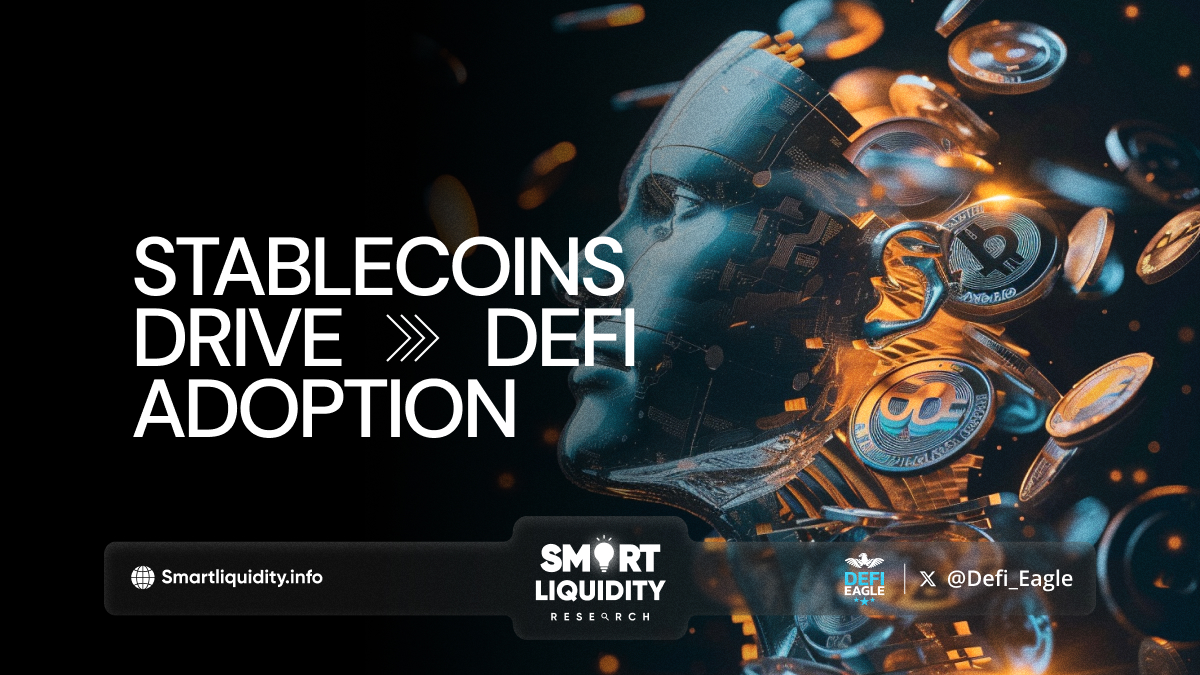The Impact of Stablecoins on DeFi Adoption


Decentralized finance (DeFi) has emerged as a revolutionary force in the financial landscape, offering a plethora of financial services without the need for centralized intermediaries. However, the inherent volatility of cryptocurrencies presented a significant hurdle for widespread adoption. This is where stablecoins stepped in, acting as a bridge between the traditional financial system and the burgeoning world of DeFi. Their impact on DeFi adoption has been nothing short of transformative.
Understanding Stablecoins and Their Role in DeFi
Stablecoins are cryptocurrencies pegged to a stable asset, typically fiat currencies like the US dollar (USD) or the Euro (EUR). This pegging mechanism ensures relative price stability compared to other cryptocurrencies, making them a more attractive medium for financial transactions within the DeFi ecosystem.
There are various pegging mechanisms employed by stablecoins, each with its own advantages and disadvantages. Here’s a brief overview:
- Fiat-backed stablecoins: These are backed by reserves of the underlying fiat currency held by a trusted custodian. This approach offers high stability but raises concerns about centralization.
- Algorithmic stablecoins: These rely on smart contracts and economic incentives to maintain the peg. While innovative, they can be susceptible to market volatility and complex to implement.
- Asset-backed stablecoins: These are backed by a basket of assets like cryptocurrencies or precious metals. They offer diversification but introduce the volatility of the underlying assets.
Regardless of the pegging mechanism, stablecoins provide several key advantages within DeFi:
- Reduced Volatility: They enable users to participate in DeFi activities without the constant worry of price fluctuations associated with other cryptocurrencies.
- Efficient Transactions: Stablecoin transactions are typically faster and cheaper compared to traditional financial systems.
- Enhanced Liquidity: They act as a major source of liquidity in DeFi protocols like decentralized exchanges (DEXs) and lending platforms.
- Improved Accessibility: Stablecoins can be used to on-ramp and off-ramp funds from the traditional financial system, making DeFi more accessible to a wider audience.
The Positive Impact on DeFi Adoption
The introduction of stablecoins has significantly boosted DeFi adoption in several ways:
- Lower Barrier to Entry: By mitigating volatility concerns, stablecoins make DeFi a more attractive proposition for users hesitant to risk their assets in a highly volatile market. This broadens the user base for DeFi protocols.
- Growth of DeFi Applications: The stability and efficiency offered by stablecoins have fueled the development and adoption of various DeFi applications. From lending and borrowing to derivatives and yield farming, stablecoins act as the lifeblood of these innovative financial products.
- Integration with Traditional Finance: Stablecoins provide a bridge between the traditional financial system and DeFi. This allows institutions and individuals to explore DeFi opportunities without fully abandoning established financial structures.
- Increased Transparency and Security: Unlike traditional financial systems, DeFi transactions involving stablecoins are transparent and immutable on the blockchain. This enhances security and fosters trust among users.
Challenges and Considerations
While the impact of stablecoins on DeFi adoption is undeniable, there are challenges that need to be addressed:
- Regulatory Uncertainty: The regulatory landscape surrounding stablecoins is still evolving, which can create uncertainty for businesses and users. Establishing clear and consistent regulations is crucial for the long-term growth of DeFi.
- Vulnerability to Depegging Events: Algorithmic stablecoins can be susceptible to depegging events, where the market value falls significantly below the intended peg. This can erode user confidence and disrupt the DeFi ecosystem.
- Centralization Concerns: Some stablecoin models rely on centralized custodians for fiat reserves, raising concerns about censorship and single points of failure. Decentralized models are still under development, and their stability needs further validation.
The Future of Stablecoins and DeFi
Despite the challenges, the future of stablecoins and their impact on DeFi adoption appears promising. Here are some potential developments:
- Hybrid Stablecoin Models: The emergence of hybrid models that combine elements of different pegging mechanisms might offer a more robust and stable solution.
- Regulation with Innovation: Regulatory frameworks need to strike a balance between ensuring consumer protection and fostering innovation in the stablecoin space.
- Integration with CBDCs: Central Bank Digital Currencies (CBDCs) could potentially integrate with stablecoins, creating a more interoperable and efficient financial system.
Conclusion
Stablecoins have played a pivotal role in driving the adoption of DeFi. They have provided a much-needed layer of stability and efficiency, making DeFi more accessible and attractive to a wider audience. As the technology continues to evolve and regulatory frameworks adapt, stablecoins are poised to further revolutionize the financial landscape by fostering a more inclusive and user-centric financial future.




